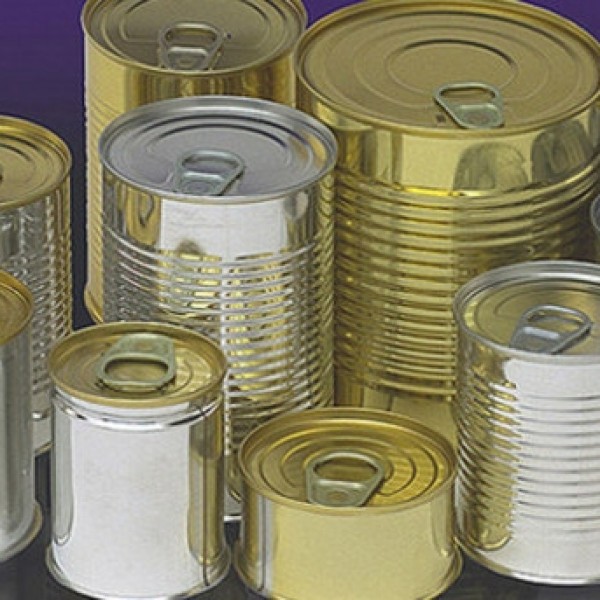About the product
Most cans are right circular cylinders with identical and parallel round tops and bottoms with vertical sides. However, where the small volume to be contained and/or the shape of the contents suggests it, the top and bottom may be rounded-corner rectangles or ovals. Other contents may justify a can that is overall somewhat conical in shape.
The fabrication of most cans results in at least one "rim", a narrow ring whose outside diameter is slightly larger than that of the rest of the can. The flat surfaces of rimmed cans are recessed from the edge of any rim (toward the middle of the can) by about the width of the rim; the inside diameter of a rim, adjacent to this recessed surface, is slightly smaller than the inside diameter of the rest of the can.
Three-piece can construction results in top and bottom rims; in two-piece construction, one piece is a flat top and the other a deep-drawn cup-shaped piece that combines the (at least roughly) cylindrical wall and the round base; the transition between the wall and base is usually somewhat gradual. Such cans have a single rim at the top. Some cans have a separate cover that slides onto the top or sometimes is hinged.
Two piece steel cans can be made by "drawing" to form the bottom and sides and adding an "end" at the top: these do not have side seams. Cans can be fabricated with separate slip-on, or friction fit covers and with covers attached by hinges. Various easy opening methods are available.[4]
In the mid-20th century, a few milk products were packaged in nearly rimless cans, reflecting different construction; in this case, one flat surface had a hole (for filling the nearly complete can) that was sealed after filling with a quickly solidifying drop of molten solder. Concern arose that the milk contained unsafe levels of lead leached from this solder plug.
The fabrication of most cans results in at least one "rim", a narrow ring whose outside diameter is slightly larger than that of the rest of the can. The flat surfaces of rimmed cans are recessed from the edge of any rim (toward the middle of the can) by about the width of the rim; the inside diameter of a rim, adjacent to this recessed surface, is slightly smaller than the inside diameter of the rest of the can.
Three-piece can construction results in top and bottom rims; in two-piece construction, one piece is a flat top and the other a deep-drawn cup-shaped piece that combines the (at least roughly) cylindrical wall and the round base; the transition between the wall and base is usually somewhat gradual. Such cans have a single rim at the top. Some cans have a separate cover that slides onto the top or sometimes is hinged.
Two piece steel cans can be made by "drawing" to form the bottom and sides and adding an "end" at the top: these do not have side seams. Cans can be fabricated with separate slip-on, or friction fit covers and with covers attached by hinges. Various easy opening methods are available.[4]
In the mid-20th century, a few milk products were packaged in nearly rimless cans, reflecting different construction; in this case, one flat surface had a hole (for filling the nearly complete can) that was sealed after filling with a quickly solidifying drop of molten solder. Concern arose that the milk contained unsafe levels of lead leached from this solder plug.
Price
Negotiable
Contact with supplier
Company
